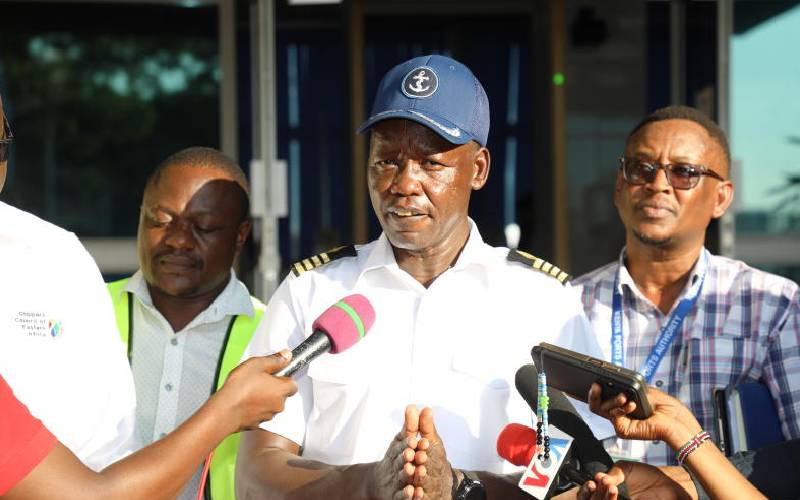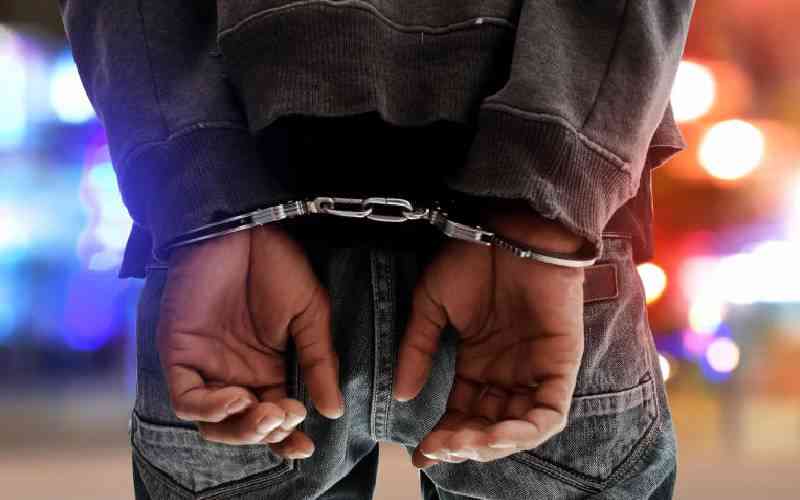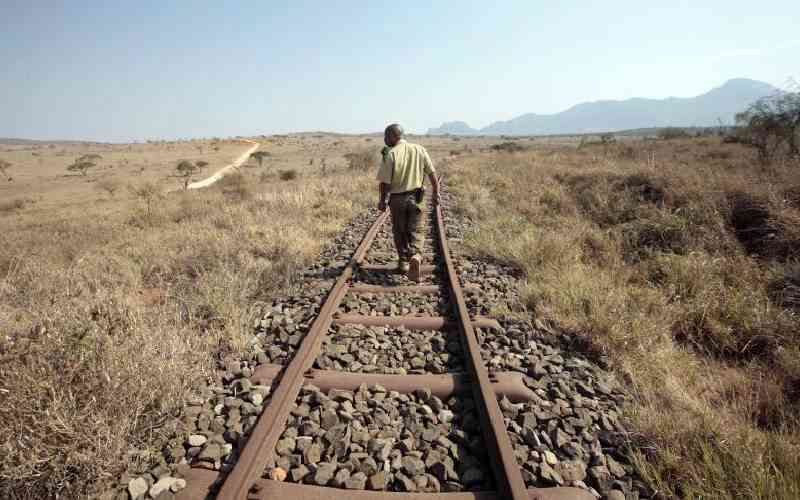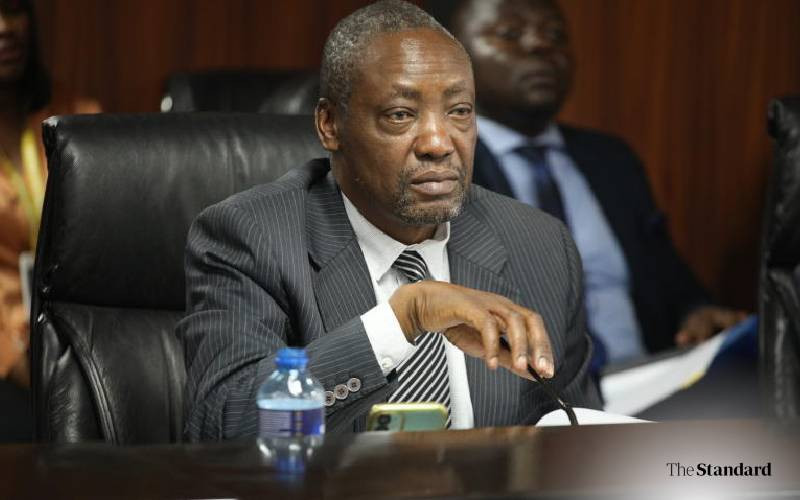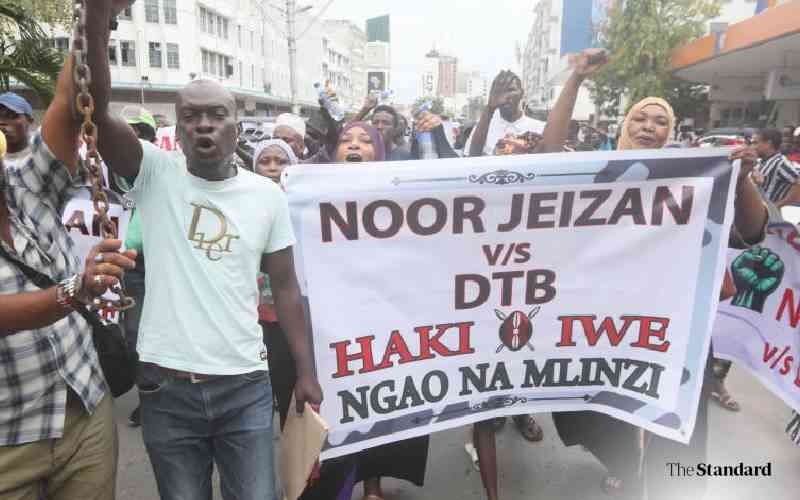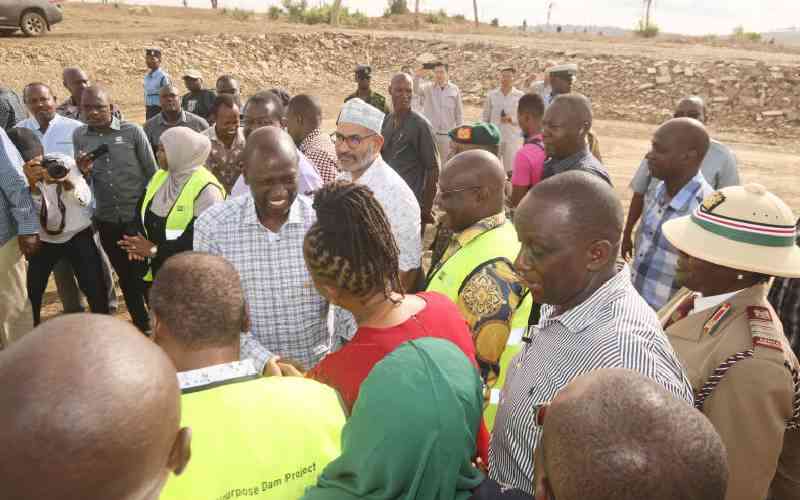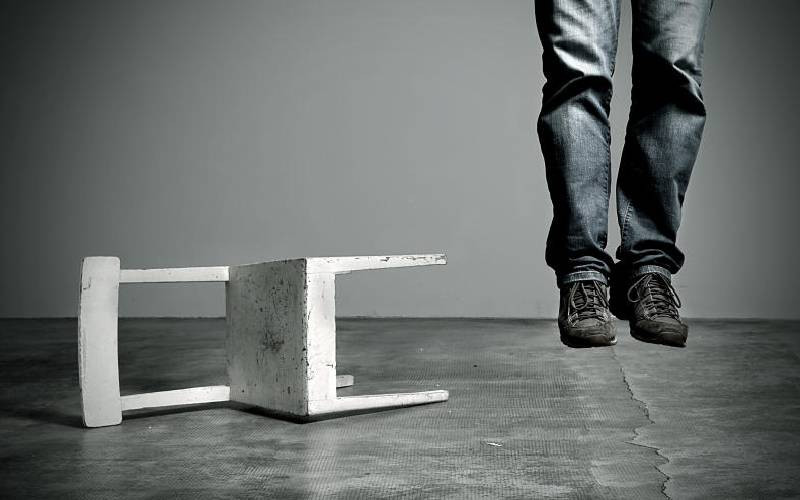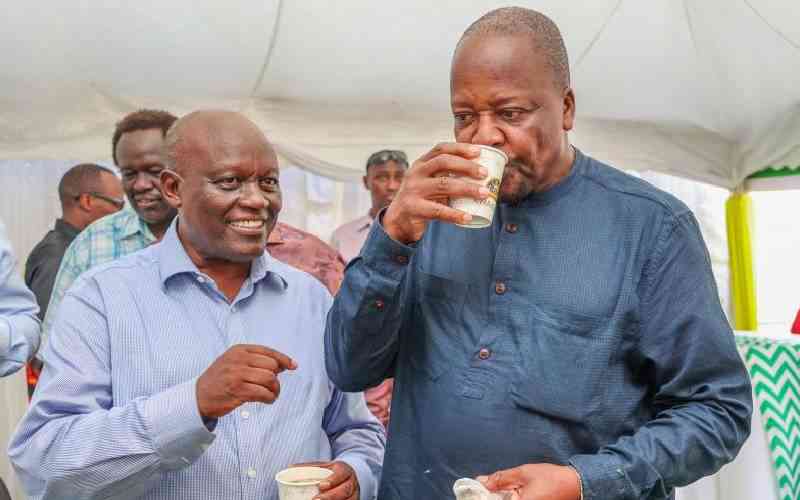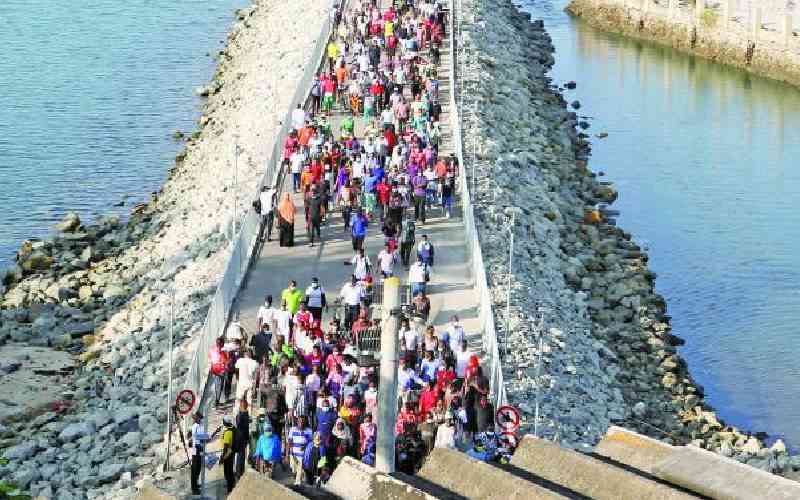
Likoni ferry crossing channel has been grappling with a surge in human and vehicle traffic since July 1 when Kenya Ports Authority (KPA) suspended the Likoni floating footbridge.
KPA, which took charge of the ferry operations two years ago, closed down the Sh1.9 billion bridge to achieve 24-hour port services.
This is after Transport Cabinet Secretary Kipchumba Murkomen and his Trade and Investment counterpart Moses Kuria ordered the bridge closed to facilitate the movement of ships.
The floating bridge was constructed to ease congestion at the ferry crossing channel during the Covid-19 pandemic.
Peak hours
Mr Said Chondo, a lorry driver, however, noted there have been delays at the channel during peak hours due to an increase in the number of vehicles and passengers using the ferry.
"I sometimes take up to two hours to cross the channel. There has been traffic congestion since the beginning of the month," he said.
KPA has confirmed the unprecedented rise in traffic after the closure of the floating bridge that was commissioned in December 2020 by former President Uhuru Kenyatta to ease congestion at the peak of the Covid-19 pandemic.
On July 1, this year, KPA Managing Director William Ruto navigated an oil tanker at night from the Port of Mombasa, through the Likoni ferry crossing, and announced the beginning of 24-hour operations at the port.
KPA was launching the night navigation of oil tankers for the first time since the port started operations over 100 years ago.
The closure of the bridge, which had a lifespan of five years, has caused KPA authorities a major headache after the number of passengers at the Likoni ferry channel rose from 300,000 a day to more than 350,000.
Vehicular traffic
The vehicular traffic also grew from an estimated 6,000 to 10,000 making it difficult to cross the channel during peak hours, between from 7 am to 8.30 am, and between 4.30 pm to 8.30 pm.
The Likoni channel is the main means of travel between Mombasa Island and the south mainland up to Tanzania through the Lunga Lunga border.
It is also the lifeline for tourism operators in the South Coast, particularly Diani.
Reports indicated that the opening of the floating bridge had attracted more people and trade between Mombasa Island and South Coast.
Residents had the Mtongwe ferry service as an alternative but it closed down more than three years ago making travel difficult until the commissioning of the floating bridge constructed by a Chinese firm.
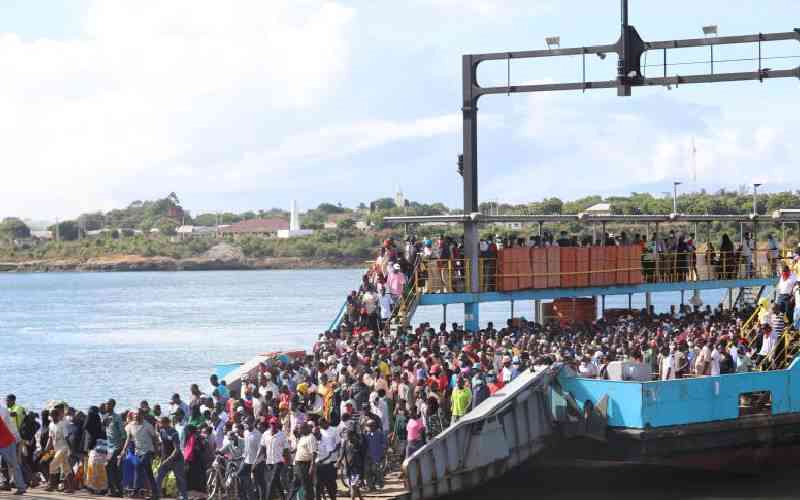
Commuters cross the ocean from Likoni to Mombasa Island through Likoni Ferry Channel on March 26, 2020. [File, Standard]
The floating bridge used to be operated by KPA staff between 4am and 8am and 4pm and 8pm during which ships could not enter or leave the Port of Mombasa.
KPA principal communications officer Hajji Masemo confirmed the high pressure caused by increased traffic at the Likoni channel.
He noted that the floating bridge caused ship delays of between 12 and 15 hours a day leading to complaints from shipping lines.
The time lost included an hour used to open the bridge using heavy machines for ships to pass through and another hour for closing it for pedestrians to use in the mornings and evenings respectively.
"The port was not operating for 24 hours until we closed the floating bridge. Shipping lines were then experiencing delays and there was a loss of business hours for the port," he said.
He however said the immediate measures now include improved management of traffic, deploying four ferries during peak hours at the channel and allocation of a ferry for passengers to ease congestion.
Ferry approaches
Traders have been cleared from all ferry approaches to ease the flow of vehicle and human traffic at peak hours.
KPA is also making arrangements to reinstate the Mtongwe ferry which is expected to serve up to 50,000 passengers a day to reduce congestion at the Likoni channel which operates 24 hours.
But the long-term relief for passengers is expected in June next year when the Sh28 billion Dongo Kundu Bridge across Mwache and Mteza creeks is scheduled to be completed.
"The Dongo Kundu Bridge is expected to offer a lasting solution when it is completed in June next year. For now, we have to come up with measures ensure ferries serve the passengers and motorists at Likoni channel despite the challenges," Masemo explained.
Kenya Ferry general manager Bakari Gowa also confirmed that the closure of the bridge has led to heavy traffic at the Likoni channel but noted that they had put in place measures to cope with the challenge.
KPA is also grappling with old ferries and aging ramps that need costly maintenance amid the increased traffic.
Retired President Kenyatta launched the construction of the footbridge at the time of Covid 19 restrictions when there were stampedes and long delays at the Likoni channel.
The bridge measuring about 840 metres long came as the first step after years of residents and tourism players calling for an alternative mode of crossing between Mombasa Island and the South Coast.
Intense consultation
The project was a result of intense consultation between Uhuru and Mombasa County leadership led by then-governor Hassan Joho, as they sought a solution to decongest the Likoni ferry channel during Covid-19.
Joho then confirmed that the president consulted him after security personnel injured a number of ferry users as they enforced the Covid-19 health guidelines.
"The floating bridge was mooted after the confrontation at the Likoni channel. The president started a conversation as we sought a solution to the safety of commuters," Joho had said.
Former Transport Cabinet Secretary James Macharia had said the president was pursuing an urgent solution to the build-up of human traffic at the Likoni ferry channel, particularly at peak hours.
"The president was alarmed by long queues of up to two kilometres long in the morning. This was a security matter and that is how this project was started," Macharia had explained.
PBeja@standardmedia.co.ke
 The Standard Group Plc is a multi-media organization with investments in media platforms spanning newspaper print
operations, television, radio broadcasting, digital and online services. The Standard Group is recognized as a
leading multi-media house in Kenya with a key influence in matters of national and international interest.
The Standard Group Plc is a multi-media organization with investments in media platforms spanning newspaper print
operations, television, radio broadcasting, digital and online services. The Standard Group is recognized as a
leading multi-media house in Kenya with a key influence in matters of national and international interest.

